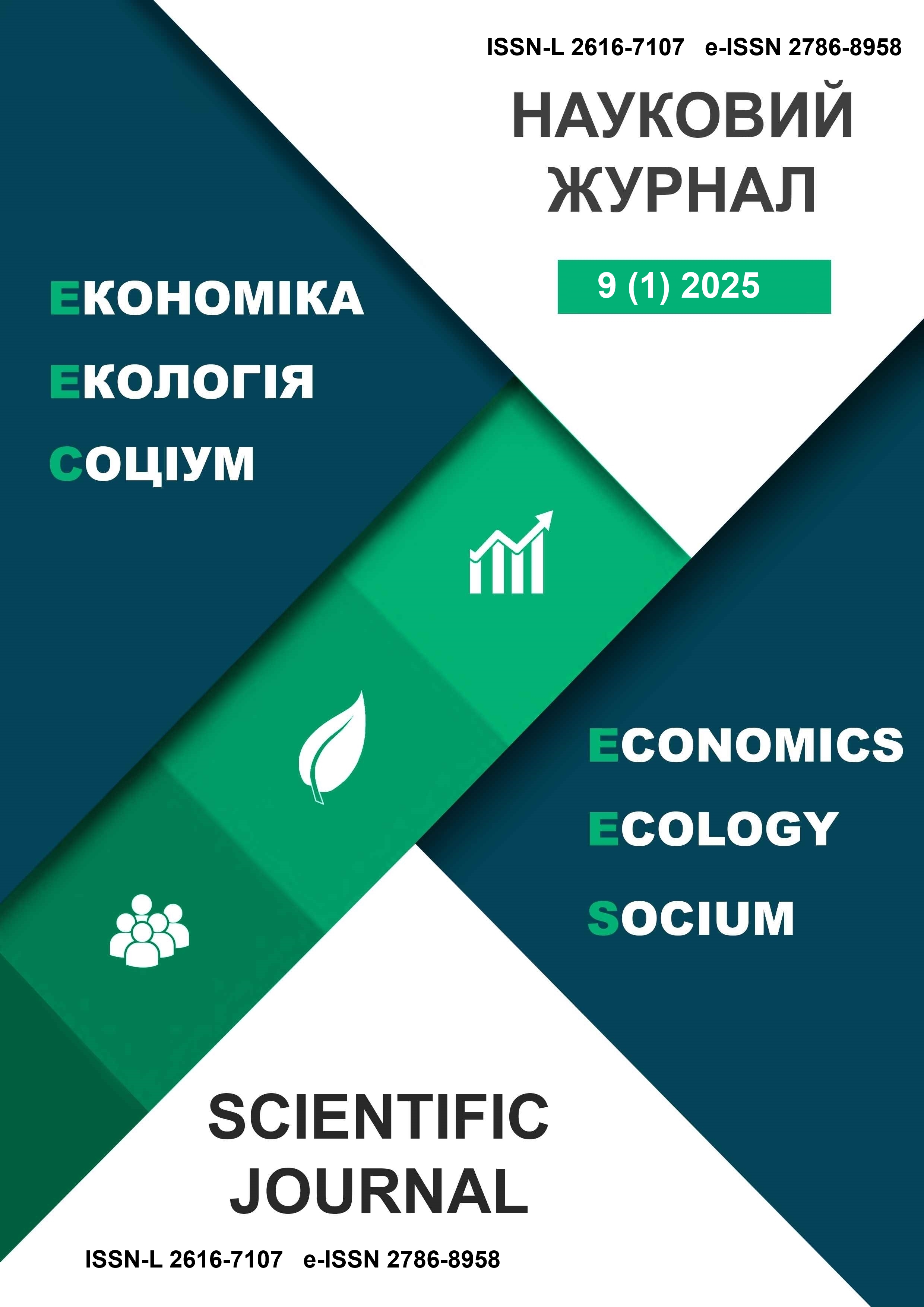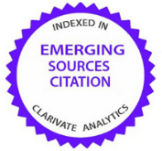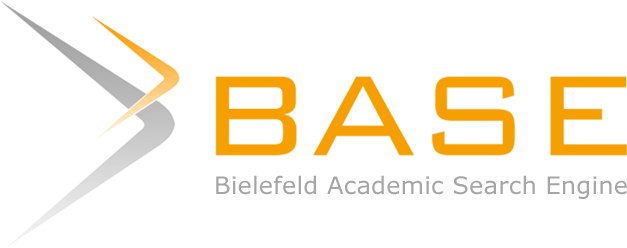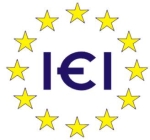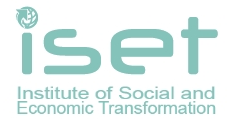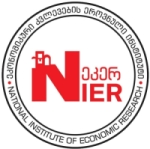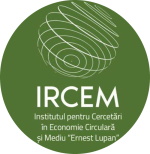Assessment of Economic Greening Efficiency in Water Resource Management
Abstract
Introduction. Climate change, water depletion, environmental pollution, and rising economic activities in water use demand greener production. This emphasises the need for efficient methods and the assessment of economic greening in water use for sustainable development by advancing a sustainable blue economy.
Aim and tasks. The study assesses the environmental efficiency of water use in Ukraine by analysing economic and environmental indicators. This study seeks to develop scientifically grounded methodological recommendations for improving enterprises' water use management.
Results. This study conducted an economic and environmental analysis of water use across Ukraine’s economic sectors based on statistical data for 2022. The analysis utilised indicators such as water productivity by sector, economic productivity per unit of polluted wastewater, and share of capital investments in wastewater treatment within the total environmental protection investments. The results show that water, sewerage and waste management companies, which are natural monopolies, impact pollution, water abstraction and water resources. These enterprises were responsible for 72% of all the volume of polluted wastewater emitted and 35.28% of all water abstraction. The water productivity (USD 0.29/m³) and economic productivity (USD 1.85/m³) per unit of polluted wastewater were the lowest among all sectors. This indicates that the sector consumes a large volume of water relative to its economic contribution and exerts a significant adverse environmental impact owing to the high level of wastewater pollution. However, the sector’s share of capital investments in wastewater treatment within its total environmental protection investments was 59.76%.
Conclusions. Based on the economic and environmental analysis of water use in the sectors of the Ukrainian economy, it is recommended that the level of influence of each enterprise in the sector on the state of water resources be assessed. Methodological recommendations for assessing the level of greening of economic activity in water use have been developed, consisting of four blocks: (i) assessment of water consumption efficiency; (ii) efficiency of wastewater management; (iii) compliance with regulatory requirements and social responsibility; (iv) assessment of innovations in the sphere of water use. Additionally, the calculation of an integrated indicator has been proposed, along with its interpretation according to an evaluation scale.
Keywords:
economic greening, sustainable water use, environmental indicators, blue economy, corporate social responsibility.References
Andryeyeva, N., Nikishyna, O., Burkynskyi, B., Khumarova, N., Laiko, O., & Tiutiunnyk, H. (2021). Methodology of analysis of the influence of the economic policy of the state on the environment. Insights into Regional Development, 3(2), 198–212. http://doi.org/10.9770/IRD.2021.3.2(3)
Antonenko, V., Sukhina, O., Popova, O., & Diakova, Y. (2021). Ecologization of economic relations in the system of economic process management. Problems of Ecology, (1), 7–16. https://doi.org/10.31474/2073-8102-2021-1-7-16
Arsawan, I. W. E., Suhartanto, D., Koval, V., Tralo, I., Demenko, V., & Azizah, A. (2024). Enhancing circular economy business model towards sustainable business performance: Moderating the role of environmental dynamism. Journal of Infrastructure, Policy and Development, 8(5), 3321. https://doi.org/10.24294/jipd.v8i5.3321
Aznar-Sánchez, J. A., Belmonte-Ureña, L. J., Velasco-Muñoz, J. F., & Manzano-Agugliaro, F. (2018). Economic analysis of sustainable water use: A review of worldwide research. Journal of Cleaner Production, 198, 1120–1132. https://doi.org/10.1016/j.jclepro.2018.07.066
Baumol, W. J., Panzar, J. C., & Willig, R. D. (1982). Contestable Markets and the Theory of Industry Structure. Harcourt Brace Jovanovich. Retrieved from https://mpra.ub.uni-muenchen.de/41974/1/MPRA_paper_41974.pdf
Beecher, J. A. (2020). Policy note: A universal equity–efficiency model for pricing water. Water Economics and Policy, 6(03), 2071001. https://doi.org/10.1142/S2382624X20710010
Ben-Daoud, M., Moumen, A., Sayad, A., Elbouhadioui, M., Essahlaoui, A., & Eljaafari, S. (2021). Indicators of integrated water resources management at the local level: Meknes as a case (Morocco). E3S Web of Conferences, 234, 00068. https://doi.org/10.1051/e3sconf/202123400068
Branca, T. A., Matino, I., Colla, V., Petrucciani, A., Kuor Maria Singh, A., Zaccara, A., Beone, T., De Cecco, L., Hakala, V., Lorito, D., Moreira, S., & Piras, E. (2020). Paving the way for the optimization of water consumption in the steelmaking processes: Barriers, analysis and KPIs definition. Matériaux Tech, 108, 510. https://doi.org/10.1051/mattech/2021006
Burkynskyi, B., Andryeyeva, N., Khumarova, N., & Kostetska, K. (2021). An innovative approach to the implementation of sustainable business ideology in Ukraine. Environmental Research, Engineering and Management, 77(4), 48–63. https://doi.org/10.5755/j01.erem.77.4.29163
D’Inverno, G., Carosi, L., & Romano, G. (2021). Environmental sustainability and service quality beyond economic and financial indicators: A performance evaluation of Italian water utilities. Socio-Economic Planning Sciences, 75, 100852. https://doi.org/10.1016/j.seps.2020.100852
David, L. O., Nwulu, N., Aigbavboa, C., & Adepoju, O. (2023). Towards global water security: The role of cleaner production. Cleaner Engineering and Technology, 17, 100695. https://doi.org/10.1016/j.clet.2023.100695
Falqi, I., Alsulamy, S., & Mansour, M. (2020). Environmental performance evaluation and analysis using ISO 14031 guidelines in construction sector industries. Sustainability, 12(5), 1774. https://doi.org/10.3390/su12051774
FAO. (2024). AQUASTAT - FAO's Global Information System on Water and Agriculture. Retrieved from http://fao.org/nr/water/aquastat/main/index.stm
Farouk, A. M., Radzi, A. R., Romali, N. S., Farouk, M., Elgamal, M., Hassan, R., Omer, M. M., & Rahman, R. A. (2024). Performance Indicators for Assessing Environmental Management Plan Implementation in Water Projects. Sustainability, 16, 3146. https://doi.org/10.3390/su16083146
Gude, V. G., & Muire, P. J. (2021). Preparing for outbreaks–implications for resilient water utility operations and services. Sustainable Cities and Society, 64, 102558. https://doi.org/10.1016/j.scs.2020.102558
Hanemann, W.M. (2006). The Economic Conception of Water. In Water Crisis: Myth or Reality? CRC Press, 61-91. Retrieved from https://gspp.berkeley.edu/assets/uploads/research/pdf/The_economic_concpetion_of_water.pdf
International Organization for Standardization. (2021). ISO 14031:2021 Environmental management – Environmental performance evaluation – Guidelines. Retrieved from https://www.iso.org/standard/75598.html
IOC-UNESCO. (2021). The United Nations Decade of Ocean Science for Sustainable Development (2021–2030). Retrieved from https://www.oceandecade.org
Khumarova, N., & Mahats, N. (2023). Implementation of the conceptual principles of business social responsibility in ensuring rational water use. Economic Forum, 13(1), 8-17. https://doi.org/10.36910/6775-2308-8559-2023-1-2
Landa-Cansigno, O., Behzadian, K., Davila-Cano, D. I., & Campos, L. C. (2020). Performance assessment of water reuse strategies using an integrated framework of urban water metabolism and water-energy-pollution nexus. Environmental Science and Pollution Research, 27(4), 4582–4597. https://doi.org/10.1007/s11356-019-05465-8
Latif, N. (2022). Comprehensive environmental performance index (CEPI): An intuitive indicator to evaluate the environmental quality over time. Environmental Research Communications, 4(7), 075016. https://doi.org/10.1088/2515-7620/ac8338
Mikhno, I., Koval, V., Shvets, G., Garmatiuk, O., & Tamošiūnienė, R. (2021). Green economy in sustainable development and improvement of resource efficiency. Central European Business Review, 1, 99–113. https://doi.org/10.18267/j.cebr.252
Ministry of Development of Communities, Territories and Infrastructure of Ukraine. (2023). National report on the quality of drinking water and the state of drinking water supply in Ukraine in 2022. Kyiv. Retrieved from https://mtu.gov.ua
Ministry of Environmental Protection and Natural Resources of Ukraine. (2021). Strategy for the Development of Water Policy of Ukraine. Retrieved from https://mepr.gov.ua/wp-content/uploads/2023/04/KMU_Water-Strategy_new.pdf
Molinos-Senante, M., Cunha Marques, R., Pérez, F., Gómez, T., Sala-Garrido, R., & Caballero, R. (2016). Assessing the sustainability of water companies: A synthetic indicator approach. Ecological Indicators, 61(Part 2), 577-587. https://doi.org/10.1016/j.ecolind.2015.10.009
Morris, J. (2019). Developing and exploring indicators of water sustainable development. Heliyon, 5(5), e01778. https://doi.org/10.1016/j.heliyon.2019.e01778
National Bank of Ukraine. (2024). Official exchange rate of the hryvnia against foreign currencies (average for the period). Retrieved from https://bank.gov.ua/files/Exchange_r.xls
Navarro-Ramírez, V., Ramírez-Hernandez, J., Gil-Samaniego, M., & Rodríguez-Burgueño, J. E. (2020). Methodological frameworks to assess sustainable water resources management in industry: A review. Ecological Indicators, 119, 106819. https://doi.org/10.1016/j.ecolind.2020.106819
Odeyemi, O., Usman, F. O., Mhlongo, N. Z., Elufioye, O. A., & Ike, C. U. (2024). Sustainable entrepreneurship: A review of green business practices and environmental impact. World Journal of Advanced Research and Reviews, 21(02), 346–358. https://doi.org/10.30574/wjarr.2024.21.2.0461
OECD. (2024). The OECD Blue Economy in Cities and Regions programme. Retrieved from https://www.oecd.org
Perez, F., Delgado-Antequera, L., & Gomez, T. (2019). A two-phase method to assess the sustainability of water companies. Energies, 12(13), 2638. https://doi.org/10.3390/en12132638
Rincón-Moreno, J., Ormazábal, M., Álvarez, M. J., & Jaca, C. (2021). Advancing circular economy performance indicators and their application in Spanish companies. Journal of Cleaner Production, 279, 123605. https://doi.org/10.1016/j.jclepro.2020.123605
Rouse, M. J. (2013). Institutional governance and regulation of water services. IWA Publishing.
Schlattmann, A., Neuendorf, F., Burkhard, K., Probst, E., Pujades, E., Mauser, W., Attinger, S., & von Haaren, C. (2022). Ecological sustainability assessment of water distribution for the maintenance of ecosystems, their services and biodiversity. Environmental Management, 70, 329–349. https://doi.org/10.1007/s00267-022-01662-3
Segnestam, L. (1999). Environmental performance indicators: A second edition note (Environmental Department Paper No. 71). Washington, DC: The World Bank. http://documents.worldbank.org/curated/en/955781468767071195
Shchepanskyi, E. V. (2021). Implementation of modern innovative technologies for the provision of state and municipal services. Bulletin of the National University of Civil Protection of Ukraine. Series: Public Administration, 1(14), 288–297. https://doi.org/10.52363/2414-5866-2021-1-34
Silva, J. A. (2024). Corporate social responsibility (CSR) and sustainability in water supply: A systematic review. Sustainability, 16(8), 3183. https://doi.org/10.3390/su16083183
Spulber, N., & Sabbaghi, A. (2012). Economics of water resources: From regulation to privatization (Vol. 13). Springer Science & Business Media.
State Statistics Service of Ukraine (2011). Classification of types of economic activity (State Classification 009:2010) . https://kved.ukrstat.gov.ua/KVED2010/kv10_i.html
State Statistics Service of Ukraine (2016). Environment of Ukraine. Kyiv. Retrieved from https://ukrstat.gov.ua/druk/publicat/Arhiv_u/07/Arch_dov_zb.htm
State Statistics Service of Ukraine. (2023a). Statistical yearbook of Ukraine for 2022. Kyiv. Retrieved from https://ukrstat.gov.ua/druk/publicat/kat_u/2023/zb/11/year_22_u.pdf
State Statistics Service of Ukraine. (2023b). Environment of Ukraine. Kyiv. Retrieved from https://ukrstat.gov.ua/druk/publicat/kat_u/2023/zb/10/zb_dov_22.pdf
The National Commission for State Regulation of Energy and Public Utilities. (2024). Register of subjects of natural monopolies in the spheres of heat supply, centralized water supply and centralized water drainage in Ukraine. Retrieved from https://www.nerc.gov.ua
UNEP. (n.d.). Sustainable Blue Economy. Retrieved from https://www.unep.org/topics/ocean-seas-and-coasts/ecosystem-based-approaches/sustainable-blue-economy
UNFCCC. (2015). The Paris Agreement. Retrieved from https://unfccc.int/process-and-meetings/the-paris-agreement/the-paris-agreement
United Nations. (2015). Transforming our world: The 2030 Agenda for Sustainable Development. Retrieved from https://sdgs.un.org/2030agenda
United Nations. (2021). The United Nations World Water Development Report 2021: Valuing Water. UNESCO. Retrieved from https://unesdoc.unesco.org/ark:/48223/pf0000375724
Willet, J., Wetser, K., Vreeburg, J., & Rijnaarts, H. H. M. (2019). Review of methods to assess sustainability of industrial water use. Water Resources and Industry, 21, 100110. https://doi.org/10.1016/j.wri.2019.100110
Zhang, R., Aljumah, A. I., Ghardallou, W., Li, Z., Li, J., & Cifuentes-Faura, J. (2023). How economic development promotes the sustainability targets? Role of natural resources utilization. Resources Policy, 85, 103998. https://doi.org/10.1016/j.resourpol.2023.103998
If the article is accepted for publication in the journal «Economics. Ecology. Socium» the author must sign an agreementon transfer of copyright. The agreement is sent to the postal (original) or e-mail address (scanned copy) of the journal editions.
